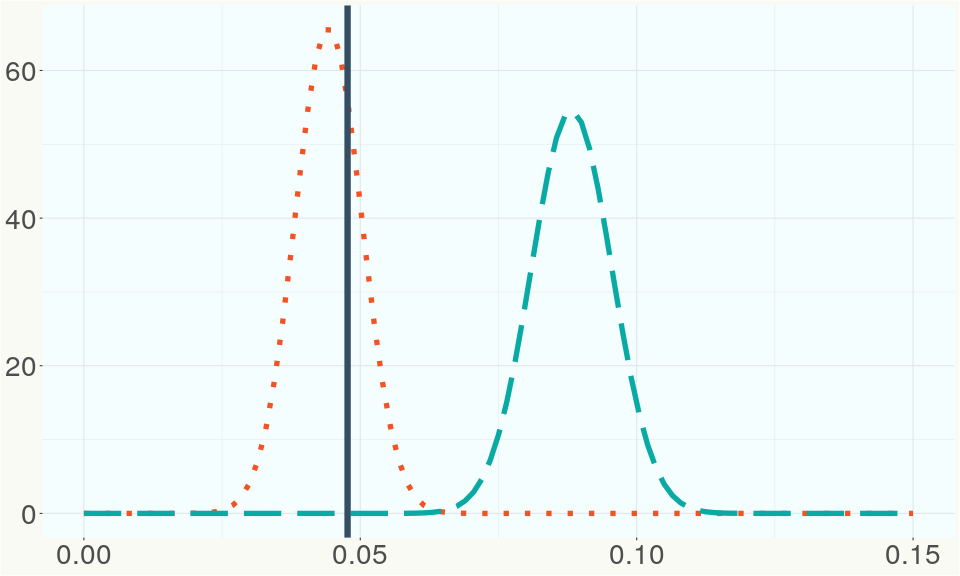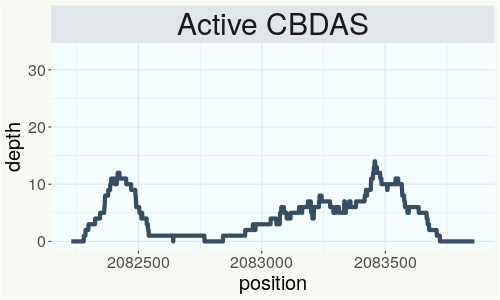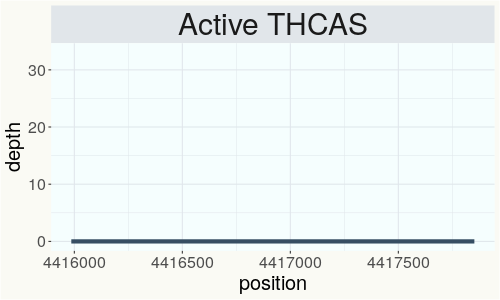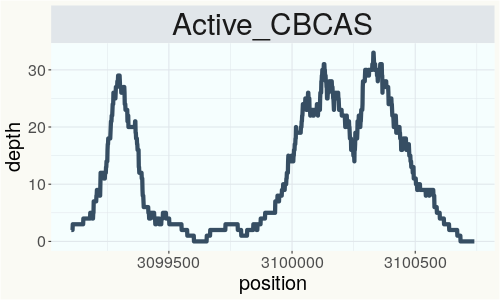Tygra
RSP 10667
Grower: CSU
General Information
- Sample Name
- Tygra 5
- Accession Date
- February 14, 2017
- Reported Plant Sex
- Female
- Report Type
- StrainSEEK v2 3.2Mb
- DNA Extracted From
- Leaf
The strain rarity visualization shows how distant the strain is from the other cultivars in the Kannapedia database. The y-axis represents genetic distance, getting farther as you go up. The width of the visualization at any position along the y-axis shows how many strains there are in the database at that genetic distance. So, a common strain will have a more bottom-heavy shape, while uncommon and rare cultivars will have a visualization that is generally shifted towards the top.
Chemical Information
Cannabinoid and terpenoid information provided by the grower.
Cannabinoids
No information provided.
Terpenoids
No information provided.
Genetic Information
- Plant Type
- Type III
File Downloads
The bell curve in the heterozygosity visualization shows the distribution of heterozygosity levels for cannabis cultivars in the Kannapedia database. The green line shows where this particular strain fits within the distribution. Heterozygosity is associated with heterosis (aka hybrid vigor) but also leads to the production of more variable offspring. When plants have two genetically different parents, heterozygosity levels will be higher than if it has been inbred or backcrossed repeatedly.
The ratio of reads mapped to Y-contigs to reads mapped to the whole Cannabis genome (Y-ratios) has been demonstrated to be strongly correlated with plant sex typing. This plot shows the distribution of Y-ratios for all samples in our database which were sequenced with the same method (panel or WGS) as this sample and where this sample falls in the distribution.

This chart represents the Illumina sequence coverage over the Bt/Bd allele. These are the three regions in the cannabis genome that impact THCA, CBDA, CBGA production. Coverage over the Active CBDAS gene is highly correlated with Type II and Type III plants as described by Etienne de Meijer. Coverage over the THCA gene is highly correlated with Type I and Type II plants but is anti-correlated with Type III plants. Type I plants require coverage over the inactive CBDA loci and no coverage over the Active CBDA gene. Lack of coverage over the Active CBDA and Active THCA allele are presumed to be Type IV plants (CBGA dominant). While deletions of entire THCAS and CBDAS genes are the most common Bt:Bd alleles observed, it is possible to have plants with these genes where functional expression of the enzyme is disrupted by deactivating point mutations (Kojoma et al. 2006).



This chart represents the Illumina sequence coverage over the CBCA synthase gene.

Variants (THCAS, CBDAS, and CBCAS)
Variants (Select Genes of Interest)
| aPT1 |
c.95_97delGT |
p.Cys32del | disruptive inframe deletion | moderate | contig121 | 2835800 | ATGT/A | |
| aPT1 | c.406A>G | p.Ile136Val | missense variant | moderate | contig121 | 2839605 | A/G | |
| HDS-2 | c.679G>C | p.Gly227Arg | missense variant | moderate | contig95 | 1990632 | G/C |
|
Nearest genetic relatives (All Samples)
- 0.162 Santhica27 (RSP10056)
- 0.177 Santhica27 (RSP11047)
- 0.179 USO31 (RSP10233)
- 0.180 USO 31 (RSP10981)
- 0.180 Santhica27 (RSP11046)
- 0.184 Santhica 27 (RSP10665)
- 0.185 C-930 lot 211005 (RSP12603)
- 0.191 Santhica 27 (SRR14708211)
- 0.192 Beniko (SRR14708275)
- 0.192 Fedora 17 (RSP10661)
- 0.194 R1in136 (SRR14708237)
- 0.197 USO 31 (RSP10983)
- 0.197 Lovrin (RSP10658)
- 0.199 Ferimon 12 (SRR14708233)
- 0.199 VIR 449 - Szegedi 9 (SRR14708213)
- 0.200 R1in136 (SRR14708227)
- 0.201 Tisza (RSP10659)
- 0.202 Bialobrzeskie (SRR14708244)
- 0.203 R1in136 (SRR14708226)
- 0.203 Ivory (RSP10668)
Most genetically distant strains (All Samples)
- 0.415 Chem 91 (RSP11185)
- 0.409 Cherry Blossom (RSP11318)
- 0.408 Cherry Blossom (RSP11311)
- 0.405 Chematonic -Cannatonic x Chemdawg- (RSP11394)
- 0.396 GMO x Garlic Breath (RSP12507)
- 0.396 Cherry Blossom (RSP11300)
- 0.395 Right Mark (RSP11628)
- 0.395 Cherry Blossom (RSP11323)
- 0.394 RKM-2018-012 (RSP11103)
- 0.394 Dog Patch (RSP11725)
- 0.393 Cherry Blossom (RSP11312)
- 0.390 Fatso (RSP11741)
- 0.390 Cherry Blossom (RSP11328)
- 0.390 CHEM4 (RSP12090)
- 0.385 GMO (RSP12091)
- 0.384 Cherry Blossom (RSP11301)
- 0.383 Russian OG (RSP12636)
- 0.383 RKM-2018-002 (RSP11093)
- 0.381 Cbot-2019-005 (RSP11133)
- 0.381 Northern Lights (RSP11501)
Nearest genetic relative in Phylos dataset
- Overlapping SNPs:
- 62
- Concordance:
- 42
Nearest genetic relative in Lynch dataset
- Overlapping SNPs:
- 3
- Concordance:
- 3
Blockchain Registration Information
- Transaction ID
-
19d6f6fc9fa6447f
faaf448fd5b1a84f d78f223f942f15a7 aaa80a37ddd7a210 - Stamping Certificate
- Download PDF (847.6 KB)
- SHASUM Hash
-
d4f8ee0865a4c02b1c3503e8087995d4 627e80a3b0e6c855 896dc5afc00f3afb